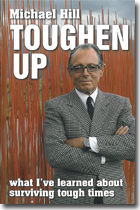I just recently finished buy•ology – How Everything We Believe About Why We Buy is Wrong by Martin Lindstrom.
The book follows a series of studies undertaken on neuro-marketing and looks at various influences in our buying decisions.
The book deals with subjects like whether grotesque anti-smoking advertisements discourage or encourage smoking, and how rituals and religions can influence buying decisions.
The findings in the book are extremely interesting and certainly made me stop to think about what thoughts go through my mind when I’ve made various purchasing decisions.
More and more companies are actually conducting brain studies prior to launching new products, tv shows etc.
It is definitely a worthwhile read for anyone involved in selling and marketing, or who simply has an interest in how we tick.
From the many interesting studies and examples the following information regarding a well known ritual may interest/surprise you:
Let’s pretend we’re at a beachfront bar in Acapulco, enjoying the mellow ocean breeze. Two ice-cold Coronas coming right up, along with two slices of lime. We give the limes a squeeze, then stick them inside the necks of our bottles, tip the bottles upside down until the bubbles begin to get that nice fizz, and take a sip. Cheers.
But first, let me pester you wait a multiple-choice question. The Carona beer-and-lime ritual we just performed – any idea how that might have come about? A) Drinking beer with a lime wedge is simply the way Latino cultures quaff their Coronas, as it enhances the beer’s taste. B) The ritual derives from an ancient Mesoamerican habit designed to combat germs, since the lime
s acidity destoys any bacteria that may have formed on the bottle during packaging and shipping. C) The Corona-lime ritual reportedly dates back to 1981, when on a random bet with his buddy, a bartender at an unamed restaurant pooped a lime wedge into the neck of a Corona to if he could get other patrons to do the same.
If you guessed C, you’d be right. And in fact, this simple, not-even-thirty-year-old ritual invented on a whim by a bartender during a slow night is generally credited with helping Corona overtake Heineken in the U.S. Market.
Let’s pretend we’re at a beachfront bar in Acapulco, enjoying the mellow ocean breeze. Two ice-cold Coronas coming right up, along with two slices of lime. We give the limes a squeeze, then stick them inside the necks of our bottles, tip the bottles upside down until the bubbles begin to get that nice fizz, and take a sip. Cheers.
But first, let me pester you with a multiple-choice question. The Corona beer-and-lime ritual we just performed – any idea how that might have come about? A) Drinking beer with a lime wedge is simply the way Latino cultures quaff their Coronas, as it enhances the beer’s taste. B) The ritual derives from an ancient Mesoamerican habit designed to combat germs, since the lime’s acidity destroys any bacteria that may have formed on the bottle during packaging and shipping. C) The Corona-lime ritual reportedly dates back to 1981, when on a random bet with his buddy, a bartender at an unnamed restaurant pooped a lime wedge into the neck of a Corona to if he could get other patrons to do the same.
If you guessed C, you’d be right. And in fact, this simple, not-even-thirty-year-old ritual invented on a whim by a bartender during a slow night is generally credited with helping Corona overtake Heineken in the U.S. Market.
